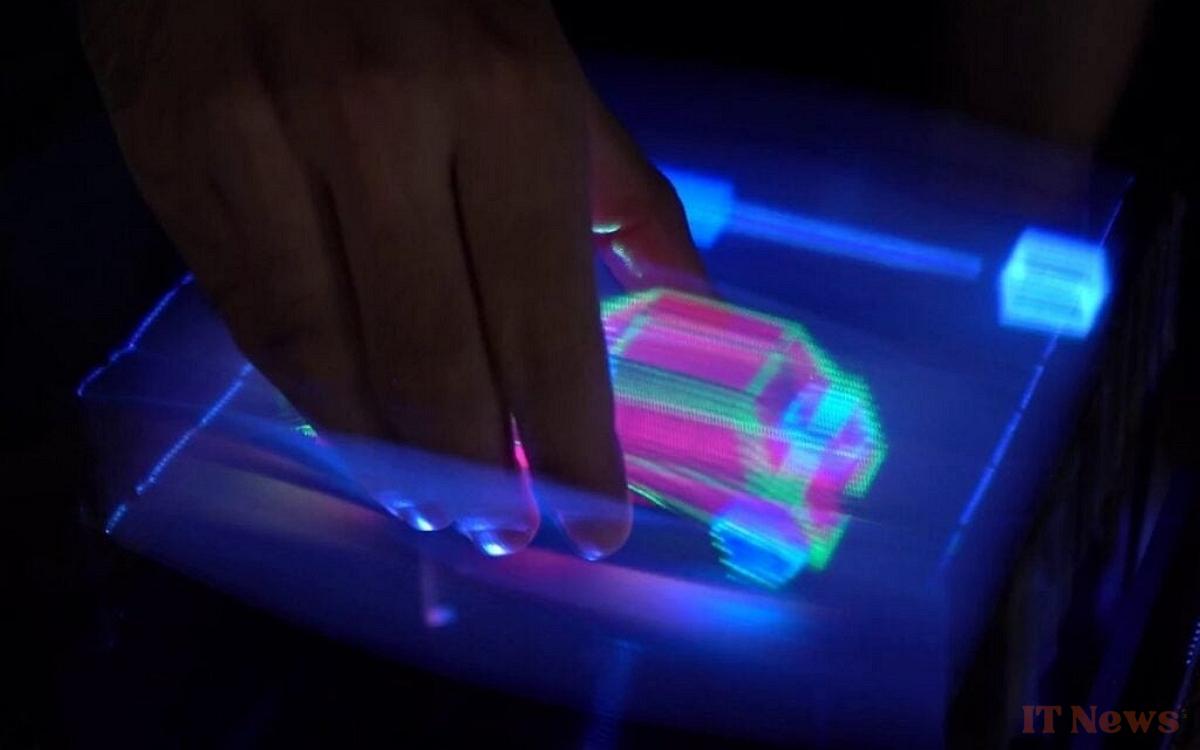What if you could touch a hologram like your smartphone? Spanish researchers have made it possible... but be careful not to break the illusion!
What if holograms finally came off screens and could be manipulated with bare hands? This is the challenge that researchers from the Public University of Navarre have successfully achieved, having developed a device that allows you to touch, move, and rotate virtual 3D objects. A world first, a far cry from static projections or mouse-based interactions.
The secret? A screen composed of elastic bands, where traditional technologies use rigid diffusers. As you can see in the image above and the video at the end of the article, no more protective domes: here, the fingers are inserted between the slats to interact directly, like pinching a digital cube between the thumb and index finger.
Read also – 3D printing becomes ultra-fast thanks to this system of holograms projected onto resin
Goodbye broken fingers, hello interactive museums
Until now, "volumetric" holograms projected images onto a rigid vibrating plate. The problem: the slightest contact could break the device... or cause injury. Researchers therefore replaced this material with flexible strips, capable of bending under finger pressure without altering the display.
But how can the 3D illusion be maintained when the screen distorts? The trick lies in software that adjusts images in real time, compensating for distortions caused by manipulation. The result: you can slide a virtual motor, animate walking legs, or assemble pieces like Lego... without a helmet or gloves.
Read also: This university uses holograms to teach and students love it
The applications are numerous. Imagine museums where visitors dissect a holographic mummy, or classrooms where students play with molecules. No need to resort to avatars or 3D mice: interaction becomes intuitive, almost natural. It remains to be seen whether this technology will hold up to enthusiastic hands. The first tests are promising, and the team will present its work at the end of April 2025 in Japan.




0 Comments